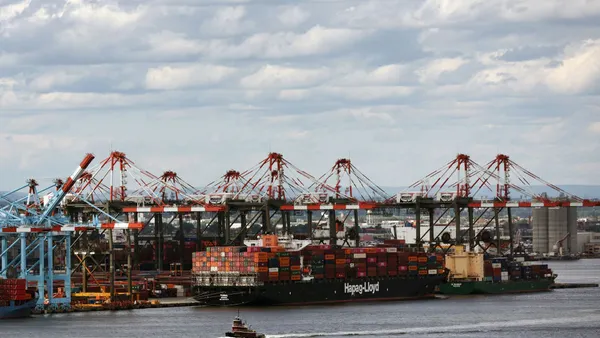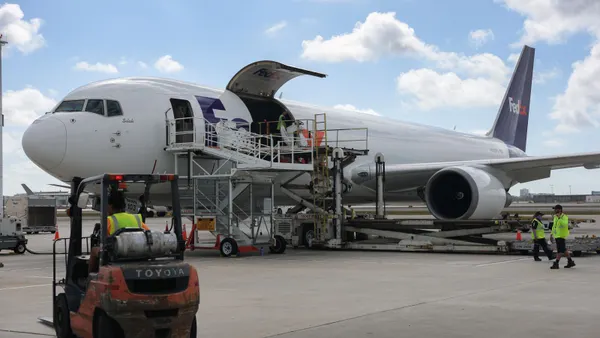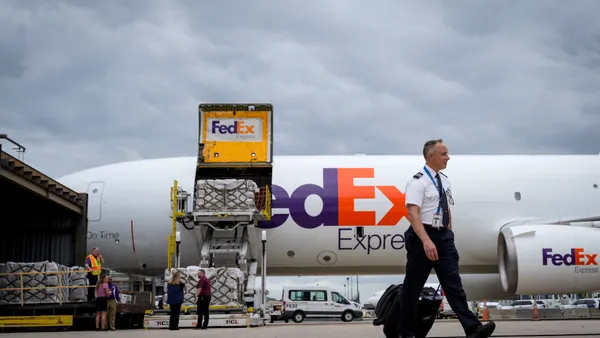Dive Brief:
- Airfreight volume fell nearly 13% YoY in August, according to the latest numbers from the International Air Transport Association. August volume was up nearly 2%, compared to July. Freight capacity fell more than 29% YoY in August.
- The slow recovery in air cargo is surprising, considering the strength shown in other economic indicators, specifically the manufacturing PMI, IATA said, adding that limited capacity is holding back further growth. International belly capacity was down 67% YoY in August, which is a slight improvement from nearly 71% in July.
- Dedicated freighter capacity is up 28% YoY. "At close to 11 hours/day, daily widebody freighters utilization is already at its highest level since the series started in 2012," IATA wrote in its report on August airfreight. "New freighters deliveries have been moderate in the past few months."
Dive Insight:
New export orders were up 5.1% YoY in the manufacturing PMI, suggesting a growing demand for goods movement as consumer spending rose through May, June and July. But capacity limits mean airfreight volume can only grow so much.
Since March, the loss of airfreight capacity has resulted in booming business for the companies in the dedicated freighter business. And that trend has yet to let up.
"There are two trends that have had substantial impact on our industry," FedEx Executive Chief Marketing and Communications Officer Brie Carere said on an earnings call earlier this month. "The first key trend is the dramatic reduction of air cargo capacity as a result of the significant loss of commercial airline capacity." The second trend is e-commerce, Carere said.
Freighter capacity currently makes up about 66% of the total capacity on the Transatlantic lane, 83% on the Transpacific and 80% on the Europe-to-Asia lane, she said.
"This compares to pre-COVID freighter capacity of 33% for Transatlantic, 59% for Transpacific and 50% for Europe to Asia," she said. "FedEx Express is incredibly well-positioned to benefit from a constrained air capacity market."
Passenger airlines are also getting into the dedicated cargo plane market.
"In the month of September, we're planning on having 1,000 dedicated cargo charter flights [with] no passengers, just belly cargo, and serving some really important markets," American Airlines President Robert Isom said at a Cowen transportation conference this month.
But even dedicated flights from passenger airlines aren't enough to boost capacity to pre-pandemic levels. Prices have remained elevated for months, as a result. Rates between China/Hong Kong and the U.S. are up 58% YoY at $5.15 per kilogram, according to the TAC Index.
Exports out of the Hong Kong International Airport grew nearly 1% YoY, according to a research note from UBS this month.
"The peak season for air cargo will start in the coming weeks, but with severe capacity constraints shippers may look to alternatives such as ocean and rail to keep the global economy moving," IATA CEO Alexandre de Juniac said in a statement.















